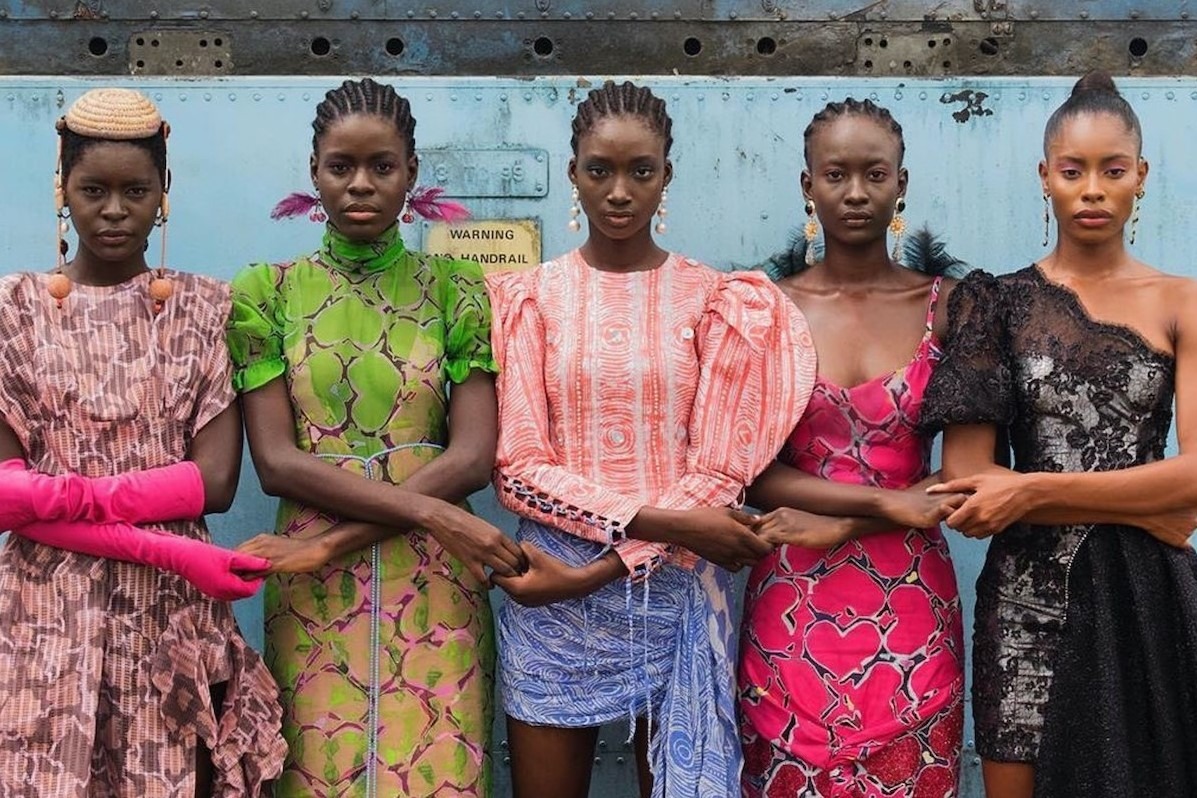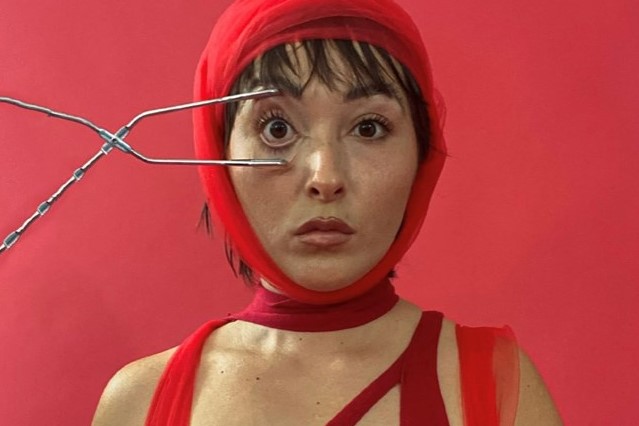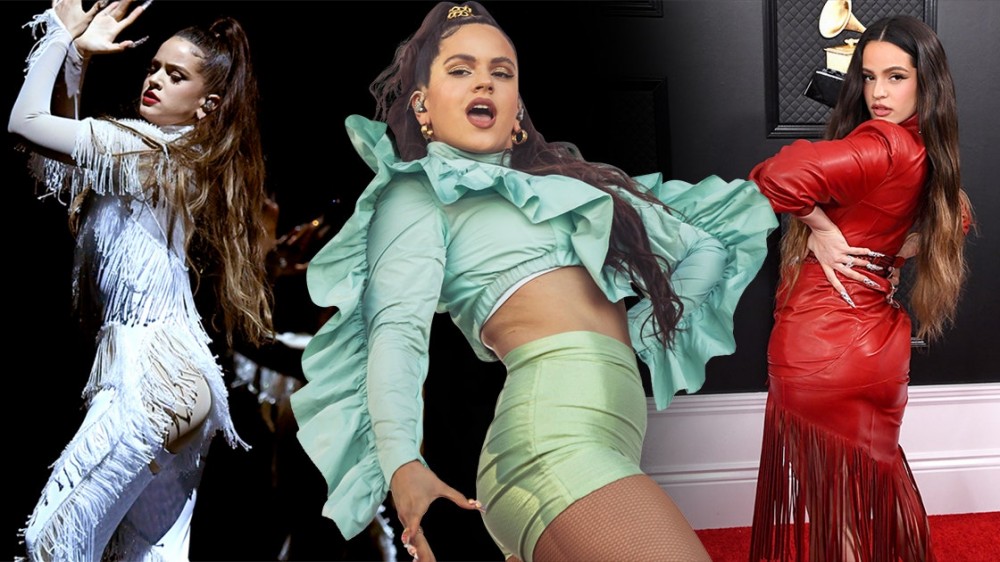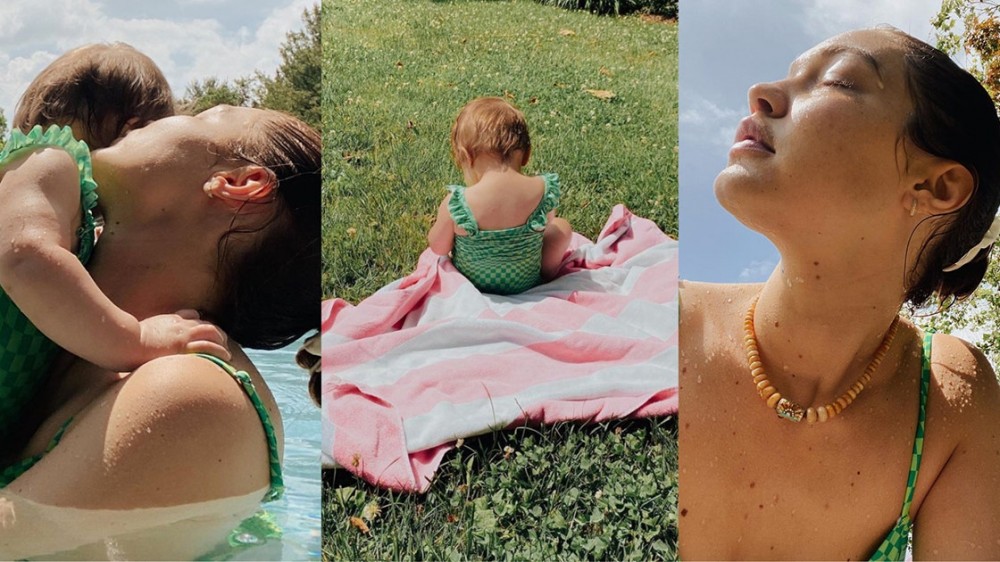
Inside the exhibition celebrating African fashion
Spotlighting wildly talented designers past and present, with works by Thebe Magugu, Kenneth Ize, and IB Kamara, the V&A’s long-awaited show throws open its doors this weekend
In late October 2021, Lagos was overtaken by an intoxicating buzz of excitement. The Nigerian capital was preparing to celebrate the tenth anniversary of its homegrown fashion week – a biannual, multi-day event founded by Omoyemi Akerele, which has since grown to become one of the most exciting spots on the global fashion calendar. This monumental feat, achieved despite difficult conditions in which African creatives are afforded little by way of support and investment, speaks to the tenacity, ingenuity, and sheer talent on show not just in Nigeria, but across the continent.
Now, some of the brightest fashion stars on the planet are rising from Africa. From Mowalola Ogunlesi and Kenneth Ize, to Thebe Magugu and Tokyo James, a new generation of designers are taking the global fashion stage by storm, leading the way in creating sustainable yet thoughtful designs, topping the list when it comes to prominent fashion prizes (Ize, James, and Magugu were all finalists in the running for the LVMH Prize), and collaborating with some of the biggest names on the planet.




Ahead of her recent Paris Fashion Week debut last month, Ogunlesi was singled out by Kanye West himself to head up his YEEZY Gap design studio, while Ize developed a capsule collection for fashion legend Karl Lagerfeld in the summer of 2021.
According to Euromonitor, the clothing and footwear market in Sub-Saharan Africa is worth $31 billion and the African continent plays a vital role in the increasing financial growth of the global fashion economy, whose retail sales of apparel and footwear is predicted to be worth more than $3 trillion by 2030. It’s for this reason that the Victoria & Albert’s Africa Fashion exhibition is a welcome acknowledgement of how far the industry has come.

Curated by Dr. Christine Checinska, Africa Fashion will showcase 250 objects, all of which weave together a layered and wide-spanning story of the contemporary fashion scene in Africa. Set to be the UK’s most substantial show of African fashions, a huge number of garments collected from a thoroughly diverse list of designers across the continent will be showcased alongside the stories behind them – with insights from designers in the form of sketches, editorials, photography, film, and catwalk footage dotted throughout. And there’s also a new, specially-commissioned series by Dazed’s EIC IB Kamara, who captures the new vanguard of African fashion in pieces from legendary designer Chris Seydou’s vast archive.
Ahead of the exhibition throwing open its doors this weekend, Dr. Checinska discusses the cultural importance of the show, bringing it all together through COVID, and some of the items she’s most excited for people to see.
“Africa Fashion is more than an exhibition. It’s an important part of our ongoing commitment to focus on African excellence when it comes to creativity. And of course, the brilliance of the contemporary African fashion scene, as it stands today, is a story that has to be told” – Dr. Christine Checinska
Hi, Dr. Christine! I’m going to start by asking: how did the idea to curate this exhibition come to be?
Dr. Christine Checinska: The idea for the exhibition has been years in the making. Before I joined the museum, there was already a plan to create an exhibition that would focus on the African fashion scene. And then with my joining the museum, I was invited to curate the show that we’re now about to launch. For me, it’s been a tremendous honour to be able to do this, particularly in light of the extraordinary historical moment we’re in. So in a sense, Africa Fashion is more than an exhibition. It’s an important part of our ongoing commitment to focus on African excellence when it comes to creativity. And of course, the brilliance of the contemporary African fashion scene, as it stands today, is a story that has to be told.
As someone of African heritage yourself, what does it mean for you to be creating this exhibition?
Dr. Christine Checinska: I think for me being of African heritage, it’s a tremendous honour to be able to give a platform to other African creatives on the continent to share their work, and to share it in the way that they want to. And that’s been our guiding principle, this idea of centering multiple African voices and perspectives, that really does reflect the diversity of the continent itself.
What are you particularly excited about in terms of what this exhibition means for the ecosystem in African fashion right now?
Dr. Christine Checinska: The exhibition is a timely celebration of the vitality and innovation of the scene, doing this through a selection of fashion creatives, exploring the work of the vanguard designers in the 20th century, as well as some of the creators at the heart of the fashion revolution that’s taking place today. That’s the significance of staging this show at the moment. And I think that this idea of centering multiple African perspectives is what gives the show its unique character.

In curating this exhibition, how would you say African designers interact and interpret politics through fashion between then and now?
Dr. Christine Checinska: One of the strands that really underpins everything we’re doing through the exhibition is this telling of a story of agency abundance, unbounded creativity. So it felt absolutely right to start with that era of independence. And we see that played out in much of the work, whether it’s Morocco or South Africa, Ghana or Kenya, we see designers having this zest for life in this almost new pan Africanism, this idea of unity in spite of difference and a desire to use our agency to create their own fashion system. That is not a comparison to the west, it’s leading the global north if you like. It’s shifting global operations. It’s so much more than it’s not in its own silo. It’s about creating new ways of working and new ways of doing fashion, while the global north looks on and is inspired by it.
Can you talk a bit more about the designs featured in the different timelines of the exhibition?
Dr. Christine Checinska: Of the mid-20th century designers, I am especially intrigued by the work of Chris Seydou that we will be featuring. Seydou is primarily known for using bògòlanfini or bogolan (mud cloth) from Mali as a fashion fabric. Traditionally made by the Bamana, bògòlanfini is a cotton or wool cloth, dyed with fermented mud. Seydou was amongst the first, if not the first designer to put this cloth onto the runway.
In researching his practice and through the public call-out for objects, we discovered much more about his work with other fabrics, other aesthetics. So in Africa Fashion, we will display a skirt suit with a matching pill-box style hat in bògòlanfini that was made for the 18th birthday of the lender, a friend of Seydou’s. In contrast, we will also show a silk ballgown with a lurex jacquard bodice made during his Paris years for his studio model and muse. Seydou had an international clientele and travelled between Paris, Bamako and Abidjan, eventually returning to Bamako, Mali in 1990.
Of the contemporary fashions, we will showcase a range of aesthetics from a range of designers, all of which I find inspiring. The artisanal luxury of Lukhanyo Mdingi is so stunning. We are showing two ensembles by Mdingi from his AW19 Perennial collection, which sheds light on mohair production in South Africa. He collaborated with textile designer Stephanie Bentum on this collection. In conversation with Mdingi, we learnt that mohair has been produced in Southern Africa since 1838. South Africa’s Karoo region alone produces around 50 per cent of the world’s mohair today.
“One of the things I am so excited to see presented are the family portraits. I absolutely love it because it’s ordinary people looking really cool – you know, someone’s auntie with their afro and their kaftan, or someone with their beehive and a little 1960s mini dress. I never tire of seeing those photographs and hearing the stories behind them” – Dr. Christine Checinska
You’ve mentioned in previous interviews about the element of sustainability in African fashion. What are your thoughts on other practices alongside sustainability that the global fashion community can learn from the current African fashion practices we have now?
Dr. Christine Checinska: I think one of the things that really strikes me regardless of the aesthetic of the designer, or the motivation of the designer, one of the things that I noticed quite often when speaking to creators on the continent, is the agility of some of the businesses – and sometimes that’s out of necessity, and sometimes it’s more out of design. In terms of agility, it’s this combination of small-scale family factory production, but then also weaving in indigenous craft techniques. And I feel that really speaks to slow fashion and careful consumption and craft that somehow, in the Global North, has been lost to the dawn of fast fashion, and high street fashion, and so on.
What was it like putting this exhibition together through COVID? It can’t have been an easy task.
Dr. Christine Checinska: Putting it together during COVID restrictions and lockdowns did present some challenges because everything that we’ve achieved, we’ve pretty much done virtually – we couldn’t travel to the continent, which is what we would have done, had it not been for COVID. All of our conversations with the different creatives that we connected with have taken place online through various digital platforms. But it also ended up being of benefit in the end, because we decided to work with a freelance research consultant that was actually based in Kenya but had contacts all over the continent. In working with him, I think we actually covered more ground geographically.
What informed the kind of designers that you chose to showcase in the exhibition? What were you looking for in their work?
Dr. Christine Checinska: I mean, it was really hard to edit. But we knew we wanted to tell the story of abundance and creativity. We also wanted to show that African fashions are undefinable and that there are many different ways to be fashionable and African. Then we sort of started with the designers that we as a team have been following for years anyway and went from there. My hope is that people will be inspired. If people are not familiar with the scene, they’ll be inspired to do their own research and discover designers that we ourselves haven’t discovered.

Which pieces are you most excited for people to see?
Dr. Christine Checinska: One of the areas of the show that I am so excited to see presented are the family portraits. We did a soft launch about a year ago with a public call-out for invited members of the public to share family portraits showing their best gear during the independence era, alongside other things as well. I absolutely love it because it’s everyday people looking really cool – you know, someone’s auntie with their afro and their kaftan, or someone with their beehive and a little 1960s mini dress. I never tire of seeing those photographs and hearing the stories behind them.
Also, the adornment section of the exhibition features work by creatives based in East and West Africa – each produces distinctive handmade pieces that redefine the category. Magdalene Afiia Sakyi’s pieces for her brand Aphia Sakyi are a conscious celebration of African heritage and power. Her Still I Rise collection takes inspiration from the resilience of African people. Each piece is named after a historical figure from the continent or the global diaspora who embodies this ability to stand tall – Queen Nanny of the Maroons, Nelson Mandela, Yaa Asentewaa, and Kwame Nkrumah. We will feature the ‘Nkrumah’ straw and brass waist ornament in Africa Fashion. It is a breathtaking piece. You cannot help but be drawn to it.
Can you give me a sense of what the energy is like leading up to the opening of the exhibition?
Dr. Christine Checinska: There’s a real buzz around this show, and there’s a real sense of support and energy around it. I think it’s because, for many of us in the museum as well as outside, people recognise that it’s long overdue. So I feel that the team has been carried forward in a way by the energy around us, whether that’s inside the museum or outside.
How does that make you feel?
Dr. Christine Checinska: I feel quite honoured to witness people’s responses. To me, it’s the beginning of real, sustained engagement with African creative excellence. We see it as a model for new ways of working, and a sustained celebration of African creativity. A celebration that brings African voices and creativity right to the heart of the V&A.
One of the areas of the show that I am so excited to see presented are the family portraits. We did a soft launch about a year ago with a public call-out for invited members of the public to share family portraits showing their best gear during the independence era, alongside other things as well. I absolutely love it because it’s everyday people looking really cool – you know, someone’s auntie with their afro and their kaftan, or someone with their beehive and a little 1960s mini dress. I never tire of seeing those photographs and hearing the stories behind them.
Africa Fashion opens on July 2, 2022. Head here to get your hands on a ticket.




